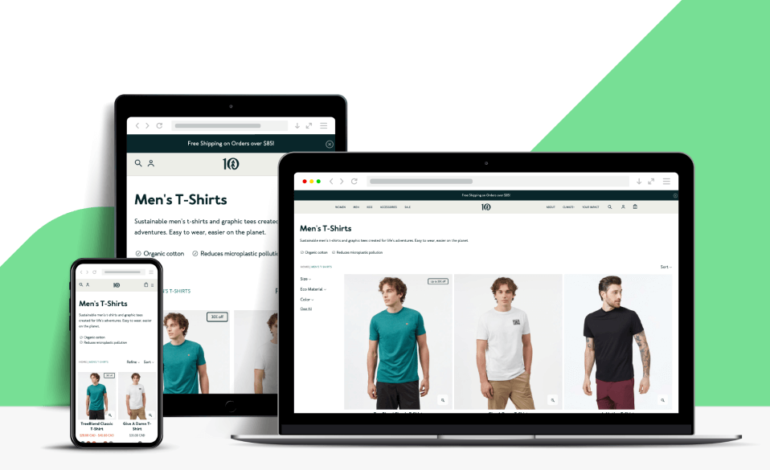In today’s digital age, starting an online business has never been easier. With the rise of e-commerce platforms like Shopify and the popularity of dropshipping, aspiring entrepreneurs have a plethora of opportunities at their fingertips. One of the most lucrative and accessible business models gaining momentum is Shopify dropshipping. In this comprehensive guide, we’ll walk you through everything you need to know to kickstart your journey into the world of Shopify dropshipping.

What is Shopify Dropshipping?
Shopify dropshipping is a retail fulfillment method where a store doesn’t keep the products it sells in stock. Instead, when a store sells a product, it purchases the item from a third party and has it shipped directly to the customer. This means the merchant never handles the product, eliminating the need for inventory storage and upfront investment in stock.
Why Choose Shopify for Dropshipping?
Shopify is one of the leading e-commerce platforms globally, known for its user-friendly interface, robust features, and extensive app ecosystem. Here are some reasons why Shopify is an ideal choice for dropshipping:
1. Ease of Use: Shopify provides a simple and intuitive interface, making it easy for beginners to set up and manage their online stores without any technical expertise.
2. Scalability: Whether you’re just starting out or scaling your business, Shopify offers flexible plans and tools to accommodate your needs as your business grows.
3. Integration: Shopify integrates seamlessly with various dropshipping apps and platforms, allowing you to streamline your operations and automate processes.
4. Customization: With Shopify‘s extensive range of themes and customization options, you can create a unique and professional-looking online store that reflects your brand identity.
Steps to Start a Shopify Dropshipping Business
Now that you understand the basics, let’s dive into the step-by-step process of starting a Shopify dropshipping business:
1. Choose a Niche
Selecting the right niche is crucial for the success of your dropshipping business. Conduct thorough market research to identify profitable niches with sufficient demand and competition. Consider factors such as trends, target audience, and product availability when choosing your niche.
2. Set Up Your Shopify Store
Sign up for a Shopify account and choose a suitable pricing plan that aligns with your budget and business goals. Once you’ve created your account, follow these steps to set up your Shopify store:
– Customize your store’s design using Shopify‘s themes and design tools.
– Add essential pages such as Home, About Us, Contact, and FAQ to provide information about your business and build trust with customers.
– Configure your store settings, including shipping rates, tax settings, and payment gateways.
– Install relevant apps and plugins to enhance the functionality of your store, such as dropshipping apps, email marketing tools, and social media integrations.
3. Source Products for Your Store
Find reliable suppliers or wholesalers for your products through platforms like AliExpress, Oberlo, or Sprocket. When selecting products, consider factors such as quality, price, shipping times, and supplier reliability. It’s essential to build strong relationships with your suppliers to ensure smooth order fulfillment and customer satisfaction.
4. Optimize Your Product Listings
Create compelling product listings that highlight the benefits and features of your products. Use high-quality images, detailed descriptions, and persuasive copywriting to entice potential customers. Incorporate relevant keywords, to improve your store’s visibility in search engine results.
5. Implement Marketing Strategies
To attract customers to your Shopify store and generate sales, you need to implement effective marketing strategies. Some popular marketing tactics for dropshipping businesses include:
– Search Engine Optimization (SEO): Optimize your website content and product listings for relevant keywords to improve your search engine rankings and drive organic traffic.
– Social Media Marketing: Leverage platforms like Instagram, Facebook, and Pinterest to showcase your products, engage with your audience, and drive traffic to your store.
– Influencer Marketing: Collaborate with influencers in your niche to promote your products to their followers and expand your reach.
– Email Marketing: Build an email list of subscribers and send targeted email campaigns to nurture leads, promote new products, and encourage repeat purchases.
6. Provide Excellent Customer Service
Deliver exceptional customer service to build trust and loyalty with your customers. Respond promptly to customer inquiries and address any issues or concerns promptly. Offer hassle-free returns and refunds to ensure a positive shopping experience and encourage repeat business.
7. Analyze and Optimize
Continuously monitor your store’s performance and analyze key metrics such as traffic, conversion rates, and sales. Use this data to identify areas for improvement and optimize your marketing strategies and product offerings accordingly. Experiment with different tactics and tools to find what works best for your business.
Conclusion
Starting a Shopify dropshipping business offers aspiring entrepreneurs a low-risk and high-reward opportunity to enter the world of e-commerce. By following the steps outlined in this guide and staying committed to providing value to your customers, you can build a successful and profitable online store. Remember to stay adaptable and open to learning, as the e-commerce landscape is constantly evolving. With dedication and perseverance, you can turn your Shopify dropshipping venture into a thriving business.


